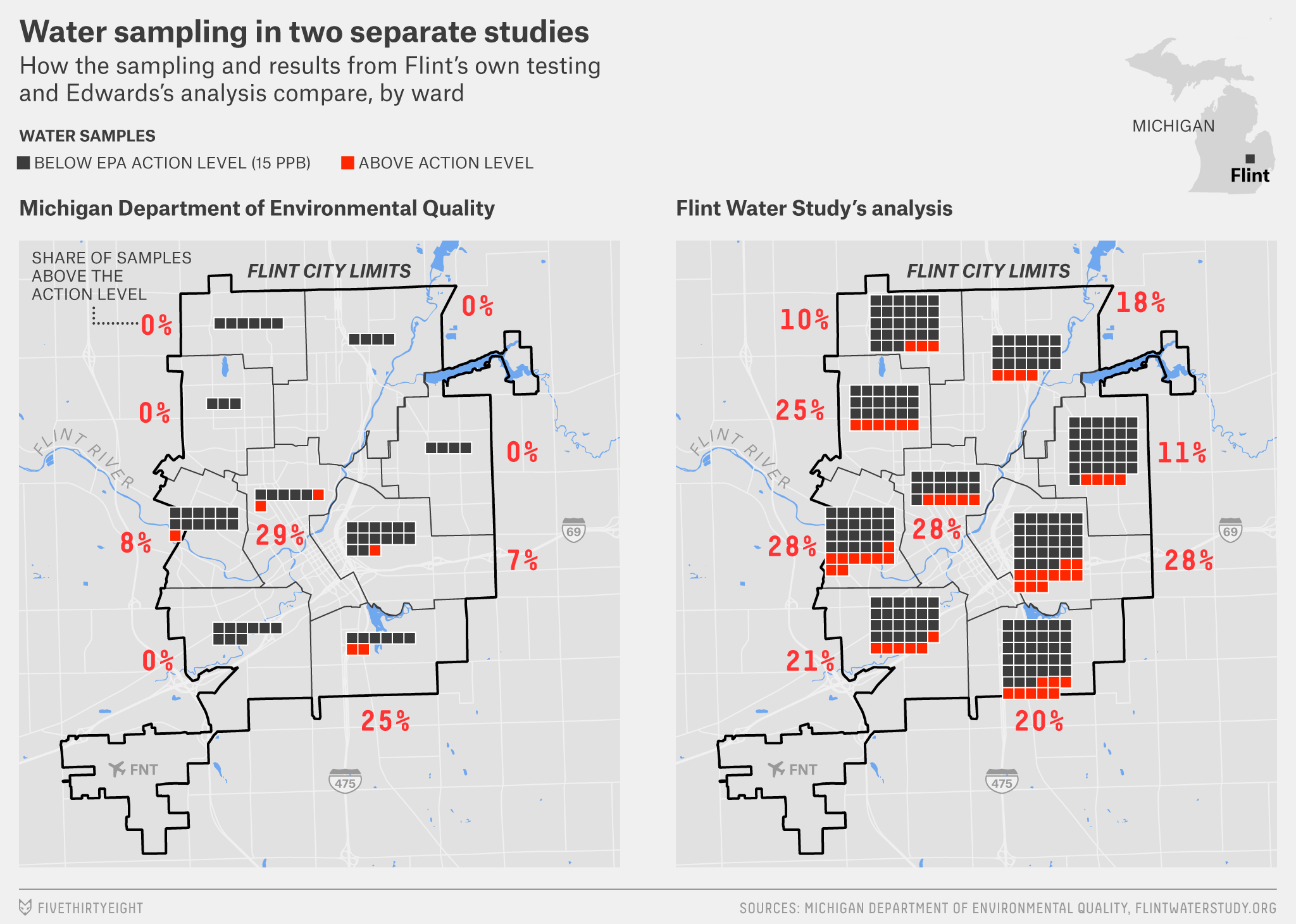It’s long and wonky, but Nate Silver’s 538 site looks at the Flint lead problem from a statistical standpoint. Good stuff. Some snippets:
Officials at the Michigan Department of Environmental Quality, the agency in charge of making sure water is safe in the state, made a series of decisions that had disastrous consequences:
- Against federal guidelines, they chose not to require the Flint water plant to use optimized corrosion control, despite telling the Environmental Protection Agency they were doing so in an email on Feb. 27, 2015.
- They took few samples and took them from the wrong places, using a protocol known to miss important sources of lead, which some say didn’t comply with a 25-year-old law meant to prevent lead exposure in residential water.
- They threw out two samples whose inclusion would have put more than 10 percent of the tests above what’s known as the “actionable level” of lead, 15 parts per billion. Had the DEQ not done so, the city would have been required to warn residents that there was a problem with lead in the water back in the summer of 2015, or possibly earlier.
The second bullet point caught my interest, and 538 expands on it. The Michigan Department of Environmental Quality did water study samples, but too few. When citizens conducted their own study, spreading out to a number of places and getting more samples, the results were very different:

That is simply amazing. Bad science practice.

